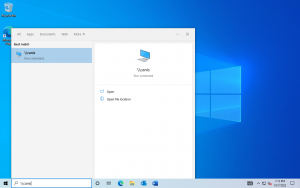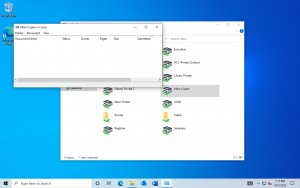The chapel at Heritage is fixed with a workstation (computer/PC) and widescreen projector such that folks can use the workstation to project slides, video, images, and more onto the large widescreen at the front. We use this setup throughout the school year during our chapel services. There is also a second projector facing the back wall so that presenters on stage can see what the audience sees.
Setup the Workstation and Projector
- Flip on both of the switches in the production booth labelled A and B. This will turn on the sound board and amps automatically.
- Turn the computer on and log into it with these credentials.
- username: chapel
- password: Heritage1
- Lower the screen. Find the white remote control and press the down arrow once. You don’t have to hold the button, the screen will lower into position and stop automatically.
- Turn on the projectors. There are two remotes plugged into thin black cables. The black remote is for the front projector, the grey remote is for the rear projector. Press ON to turn them on. They will take a moment to fire up and light the bulbs so be patient and don’t press the ON button a bunch of times in a row.
- Turn up the speaker volume by using the MAIN fader on the sound board.
At the end of the event, please turn the projectors off by pressing the ON button twice.



